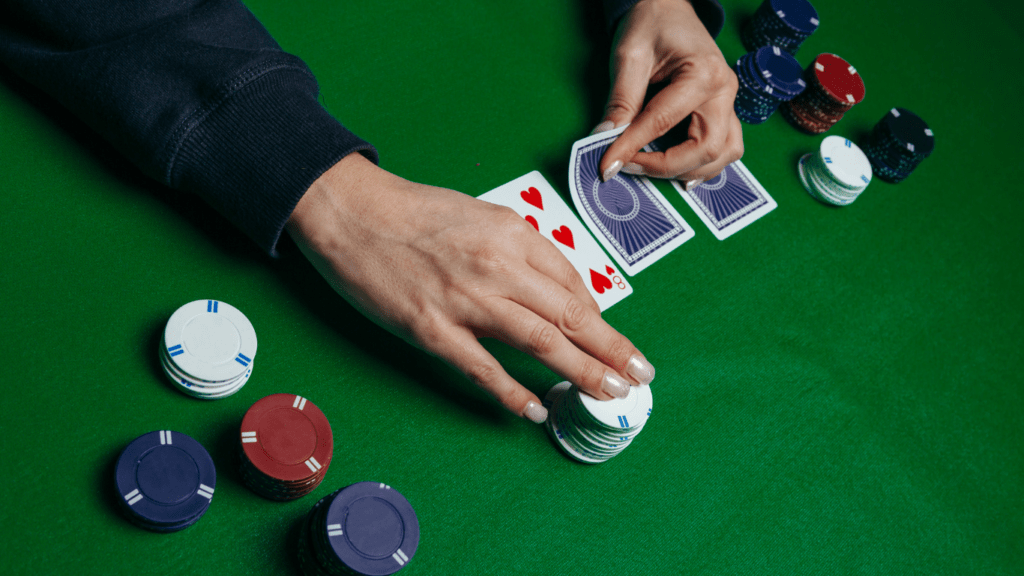Understanding the Concept of ‘Hot’ and ‘Cold’ Tables
The notions of ‘hot’ and ‘cold’ tables are pervasive in casino culture. Many gamblers swear by their existence, attributing their wins and losses to these table ‘temperatures.
What Are ‘Hot’ and ‘Cold’ Tables?
- ‘Hot’ tables, in gambler terminology, are those perceived as having a streak of favorable outcomes. Players think they’re more likely to win at such tables.
- Conversely, ‘cold’ tables are believed to result in continuous losses, prompting players to avoid them. These perceptions often stem from observed short-term trends in outcomes.
However, casinos design games like;
- roulette
- blackjack
to have random and independent results, with each event uninfluenced by previous ones (source: American Gaming Association).
The Gambler’s Fallacy and Table Games
The perception of “hot” or “cold” tables is often tied to the assumption that past outcomes affect future ones. This concept aligns with a cognitive bias known as the Gambler’s Fallacy.
Definition of the Gambler’s Fallacy
The Gambler’s Fallacy is a cognitive bias where people believe that if an event happens frequently in the past, it’ll happen less frequently in the future, or vice versa.
For instance, a player who sees red appear multiple times in a row on a roulette wheel might bet on black, thinking a change is due.
However, each spin of the roulette wheel is an independent event with no influence from prior spins.
How the Gambler’s Fallacy Relates to ‘Hot’ and ‘Cold’ Tables
Casinos design table games like blackjack, roulette, and craps to have random and independent outcomes.
Despite this, players often consider tables “hot” after consecutive wins and “cold” after consecutive losses.
This belief stems from the Gambler’s Fallacy, where players expect streaks to end, thinking randomness evens out in the short term.
In reality, these streaks are just part of the random nature of the games and have no bearing on future outcomes.
Statistical Analysis of Casino Games
Analyzing casino games statistically reveals the myth of “hot” and “cold” tables.
By examining numbers and understanding probabilities, it’s clear that patterns players believe in don’t hold.
Looking at the Numbers
In casino games, statistical analysis focuses on long-term outcomes.
Roulette, for instance, has a fixed house edge of 5.26% on American wheels. This edge ensures the casino’s profitability over time.
For slot machines, the return-to-player (RTP) percentage is usually between 85% and 98%, indicating the average payout over many plays.
These numbers emphasize that short-term fluctuations don’t alter the long-term house benefit.
Probability and Independent Events in Gambling
In gambling, each event is independent. The outcome of one roulette spin doesn’t affect the next. Likewise, card games like blackjack reset probabilities after each hand.
In a coin toss, the probability remains 50% heads or tails, regardless of previous outcomes.
This independence negates the idea of “hot” or “cold” tables. Gamblers might perceive patterns, but these are random clusters statistically expected in large data sets.
The Impact on Betting Strategies

Adjusting betting strategies based on perceived table trends can be tempting for many players. However, this often leads to misguided decisions.
Adjusting Bets Based on Perceived Table Trends
Players frequently adjust their bets when they believe a table is “hot” or “cold.” Increasing bets during what they perceive as a hot streak and decreasing them when the table seems cold is common behavior.
Despite popular belief, these adjustments don’t align with statistical outcomes. Games like roulette and blackjack have a fixed house edge, meaning past results don’t influence future ones.
For instance, if a player wins three consecutive hands at blackjack, it doesn’t increase the odds of a fourth win.
The previous wins and future results are independent events, making trend-based adjustments ineffective in altering the house advantage.
The Risks of Following Table ‘Temperature’
- Following the perceived “temperature” of a table carries significant risks.
- Players may fall into the trap of the Gambler’s Fallacy, believing a win or loss is “due” based on recent outcomes.
- This mindset can lead to larger, riskier bets without improving odds. For example, a gambler who notices a roulette table has landed on red multiple times might feel compelled to bet heavily on black, expecting balance.
- This assumption disregards the random nature of each spin.
- Thus, perceived hot and cold streaks can prompt imprudent betting, increasing the likelihood of significant losses due to flawed expectations.
- While adjusting bets based on perceived trends may seem logical, it often stems from misconceptions about game outcomes.
- Understanding the independence of events in casino games is crucial for developing sound betting strategies.
How Casinos Respond to the Myth
Casinos keenly observe player behavior, leveraging beliefs about “hot” and “cold” tables to their advantage.
They employ specific strategies and layout designs to influence perceptions and enhance the gaming experience.
Casino Strategies to Utilize Player Beliefs
Casinos design promotions and marketing activities to exploit these beliefs. They often employ strategic lighting, sound effects, and staff interventions.
For example, dealers might announce “lucky” tables to attract players to certain locations. They also use dynamic messaging boards displaying recent wins, creating an impression that the table is “hot.”
By doing so, casinos entice more players to join these tables, increasing overall game participation and, subsequently, casino revenue.
Does Casino Layout Affect the Perception of ‘Hot’ or ‘Cold’?
The layout of a casino floor significantly influences player perceptions.
Tables located near entrances and high-traffic areas are typically more crowded, contributing to the belief that these tables are “hot.”
Additionally, centralized and prominently placed tables seem more popular, fostering a sense of activity and excitement.
Casinos might use more visible areas to promote “loyalty” or “rewards” tables, further reinforcing the myth.
The arrangement and clustering of slot machines and tables amplify this perceived variability of “hot” and “cold” tables, subtly guiding player behavior and engagement.



